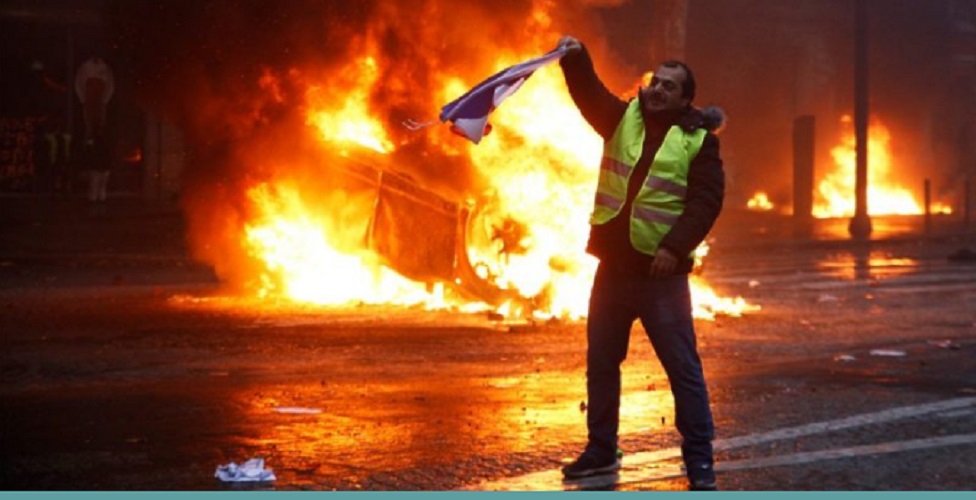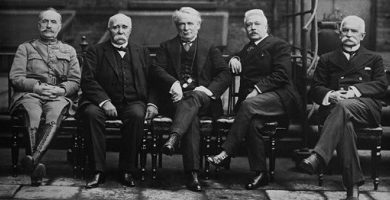What is anarchy?
We explain what anarchy is, how was the emergence of this political doctrine and what are the main figures of anarchy.
-
What is anarchy?
Anarchy refers to the ability to govern itself and organize, thus avoiding the repressive power of any political organization . Anarchy is strictly applied to the political sphere, as opposed to autarchy, understood as the ability to govern oneself.
The term anarchy generates fear among society, associated with chaos and violence . For many, it is only one of the many forms of rebellion against the system, which has even managed to generate intellectuals who have developed anarchist theory . It is a term that inevitably brings controversies.
The word anarchy is composed of the prefix ” a ” or ” an ” that refers to the denial of a state or thing. On the other hand, ” archos ” means authority or government (as an oligarchy , for example). In this way, we see how the etymological origin explains the meaning of the word anarchy, understood as the denial of a sovereign or hierarchical system .
Since anarchism is the fight against hierarchies, they are necessarily opponents of the State , understood as the representation of the oppression of the masses.
-
How did this concept come about?

While it is considered that there is a history of anarchism in antiquity (for example, many consider slave revolts and certain Celtic organizations as pioneers of anarchism), anarchism as such is a product of Modernity .
Many authors consider anarchism as one of the reactions against capitalism , along with socialism and later communism . In fact, anarchism has always had greater acceptance among the most disadvantaged working classes.
Socialism has in common with anarchism, which both fight for the exploitation of man by man . These two doctrines are the result of capitalism , since it is in this economic-political system, and more mainly in its origins, that is where we find the wildest exploitation of a large mass of workers by a minority.
Like any political and philosophical doctrine, it implies a vision about man. Anarchism understands man as good by nature , that he does not need another to determine himself, and that the set of traditions and institutions have corrupted over time. Although it assumes society as something natural, since the relationship is spontaneous and natural, the State as a representation of the masses is the maximum tool of exploitation.
Modernity brought the technological advance of the hand of capitalism, becoming man a server of the machine and an appendix of the global system. This criticism extends not only to the capitalist system, but in the socialist system, no matter how much the means of production are collective, hierarchical relations are maintained.
From this it follows that any radical change that must occur in society (that is, the transition to an anarchist society) must be spontaneously and not through any party or organization .
-
Main figures of anarchy
Although the intellectual tradition is an anarchist, we will make a brief cut on the authors who have contributed most to the anarchist theory, transcending their work in such a way that we know it today.
- Max Stirner : Born in Germany in 1806 under the name of Gaspar Schmidt, son of an insane mother and with several love affairs, he finally marries Marie Danhard, a woman from a very privileged economic position. After having squandered his wife’s fortune, he falls into misery, but continues to join important intellectuals of the time. The vision of Stirner on anarchism is what is called “individualist anarchism” as it understands the individual as superior to any other social construct (either nation, country, etc.) and society should be a free association of individuals pursuing your wishes. He died in 1865.
- Mikhail Bakunin : Born in Russia in 1814, he was one of the leading exponents of anarchism considered “active.” His work emphasizes the importance of popular insurrection, mass movements, etc. It is believed that his work actively influenced the Paris Commune, a key period for anarchism, in which a group of citizens took control of theParisian city for a short time, before being executed. Unlike Stirner, he recognizes the importance of the individual’s collectivist character, going beyond his personal desires and passions.




